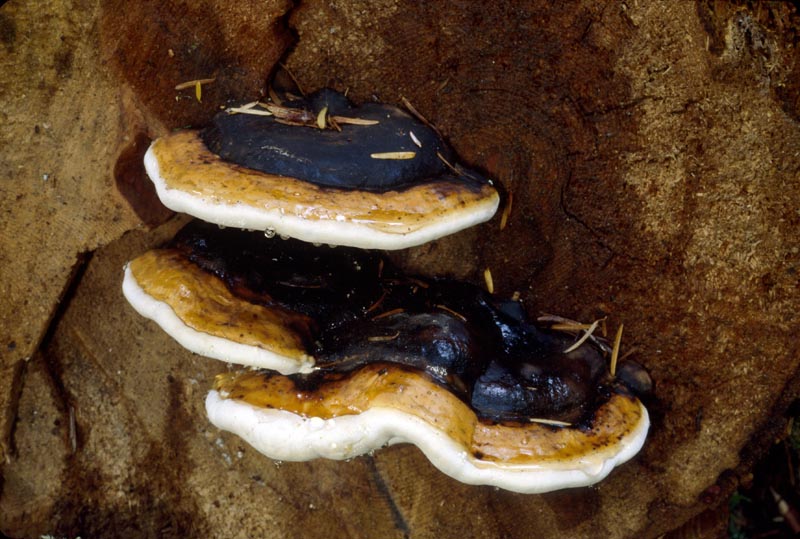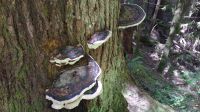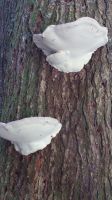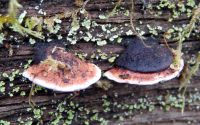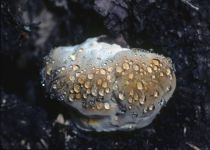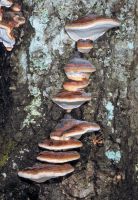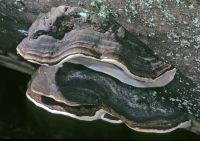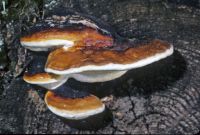Habitat: Occurs on conifers and hardwoods.
Conservation Status: Not of concern
Fomitopsis pinicola causes a brown-rot primarily in conifers, but occasionally in hardwoods, especially black cherry. It is our most common conk and a major player in the recycling of wood into soil. While normally forming a woody, rounded to shelf-like fruitbody, it also can grow as a simple layer of tubes on the underside of logs. The surface of the cap is usually banded with orange, reddish orange, or grayish to black, and has a whitish rounded edge. The interior is woody and fibrous, with multiple tube layers. The pores are very small, white, and bruise yellowish when bruised. When growing shelf-like, Heterobasidion annosum can appear rather similar, but lacks reddish colors.
PNW Herbaria: Specimen records of Fomitopsis pinicola in the Consortium of Pacific Northwest Herbaria database
CalPhotos: Fomitopsis pinicola photos


